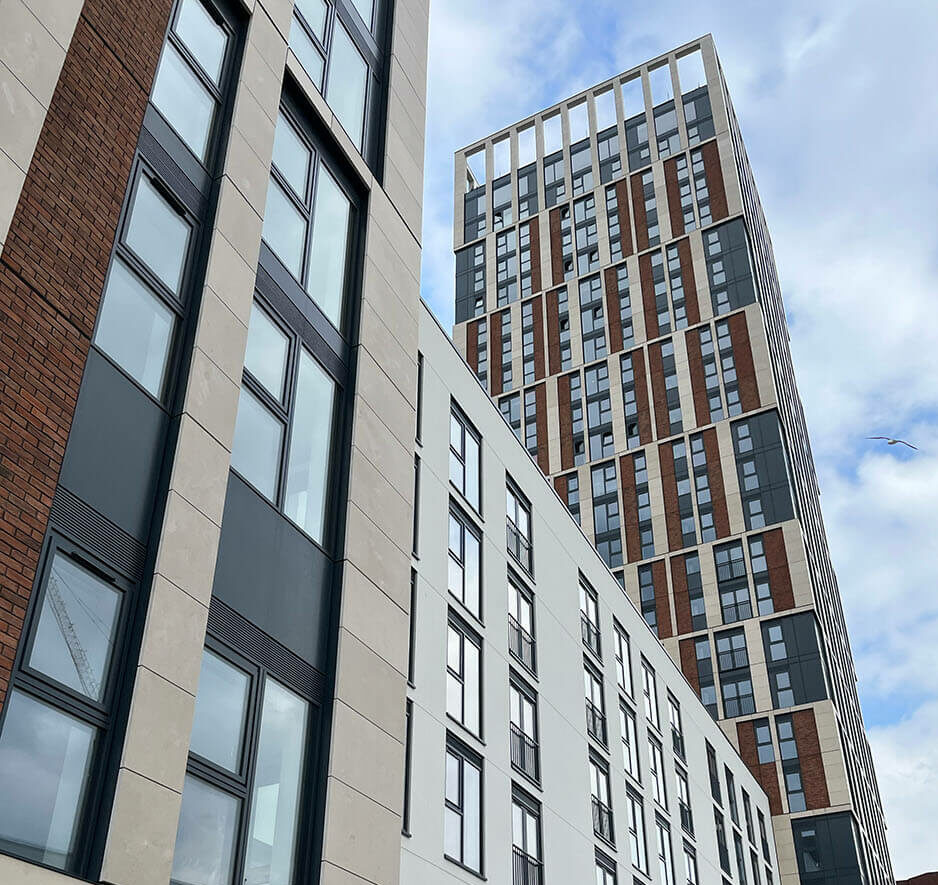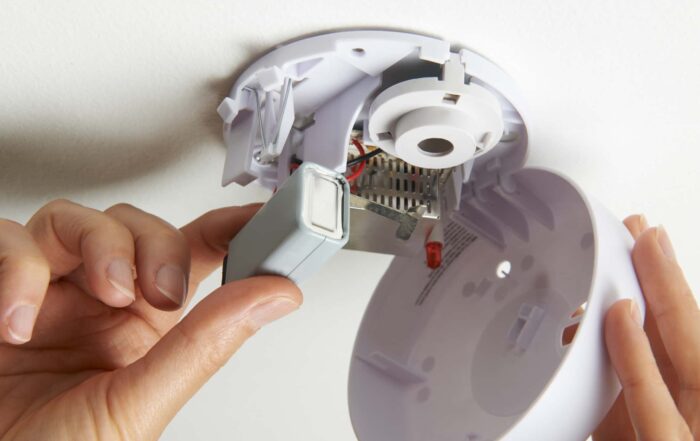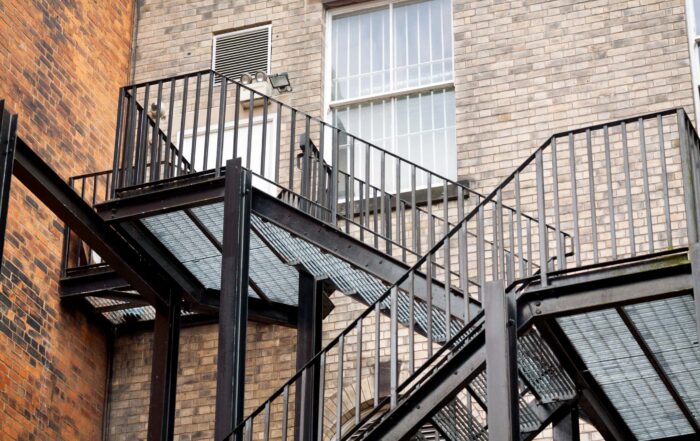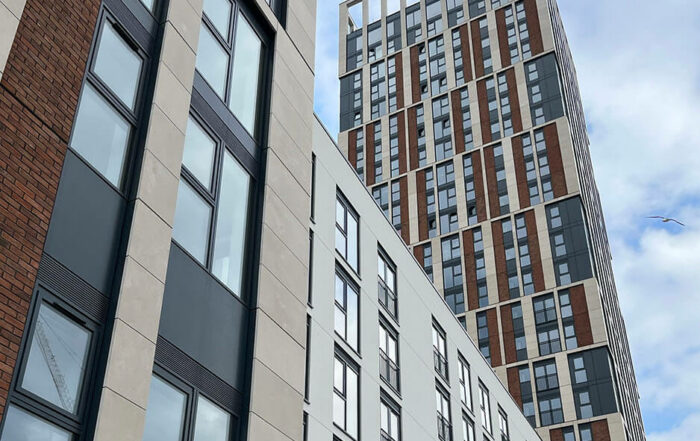Fire Safety for Mixed-Use Buildings
Ensuring you have up to date fire safety systems for your mixed-use building isn’t just a good way to keep your residents and structure safe and secure – it is a legal requirement. Learning what these regulations entail will keep you compliant while ensuring the safety of your building.
Secure your property, assets, and occupants today. At Sovereign Fire & Security, we’re committed to bringing you the latest information on fire safety innovations. In this article we will discuss what qualifies as a mixed-use building, the mixed-use regulations, the fire safety regulations for different classes within a building, and the process involved at different stages of fire safety assessment and implementation.
For fire safety and security, look no further than Sovereign. Contact us today to discuss your needs.
What is a Mixed-Use Building?
A mixed-use building is defined as a structure that has multiple classes for use. This can include residential, commercial, and retail components, among others. A mixed-use building has separate regulations compared to its parts, and when compared to a multi-occupancy or HMO property.
These differences in mixed-use regulations come from the different hazards that are presented by the varying types of use-class. This leads to the need for a more comprehensive set of regulations to cover every possible scenario, helping to protect occupants from any section in your building. Due to these differences in danger sources and subsequent regulations, it is important to stay up to date on the specific regulations for your property and ensure you have the best fit fire safety system.
Why is Fire Safety Important in Mixed-Use Buildings?
With a mixed-use building, there can be an increase in the potential sources of fire. This is because, unlike a single-use building, all of the hazards that individual residency types will have can be present in a single structure. Additionally, there are likely to be multiple occupants interacting in different parts of the building simultaneously, increasing the risk of fire.
The way in which a fire safety system is implemented may also have to be adjusted. Different escape routes, signage, emergency lighting, and alarm systems may need to be present for the various different occupancy types to ensure safety and full regulatory compliance.
Check out our ultimate guide to emergency lighting systems >

Fire Safety Regulations for Mixed-Use Buildings
A term that comes up often when talking about fire safety and mixed-use regulations is “responsible person”. This term refers to the individual or persons who are responsible for the fire safety of the building – this can be a building manager, the owner, or landlord, among other choices depending on several factors including the classification of the building or the classes present within it.
Due to the nature of mixed-use buildings containing multiple different classes of occupants, it is likely there will be more than one responsible person. The fire safety plans need to be co-ordinated between these responsible persons, ensuring the safety of occupants and people near the premises. For common and shared areas, this responsible person is typically the landlord, the freeholder, or the managing agent.
The Fire Safety Regulations of 2022, which came into effect in January 2023, set out the regulations mixed-use properties and multi-occupancy residencies would have to follow to ensure they are as safe as possible from fire. There are different specifics depending on the size and layout of the building as well, such as differences between buildings under 11m, over 11m, and over 18m.
The regulations cover things such as entrance fire door checks at least once a year, communal fire door checks every three months, and the provision of fire safety training, information, and instructions to residents about the importance and use of fire doors.
The regulations for different types of mixed-use building, such as specific ones for residential or commercial buildings, must also be considered to ensure the safety of all classes of occupants in the event of a fire.
Get in touch with Sovereign Fire & Security today to ensure your building’s fire safety is up to standard.
Fire Safety for Different Types of Mixed-Use Building
Aside from the mixed-use regulations covering these types of buildings in general, it is good to look at the regulations for the individual classifications of use that your building entails. We will detail the benefits and regulations behind fire safety practices for residential and commercial buildings, two of the most common classes within a mixed-use property.
Fire Safety for Residential Buildings
Fire safety for residential buildings is of key importance as there can a large number of residents within a single mixed-use or multi-occupancy property. They are also special cases of residencies such as care homes which require their own considerations for fire safety – in the case of care homes due to greater evacuation times leading to increased risk during a fire.
The Fire Safety Regulations of 2022 lay out the requirements for a residential multi-occupied building. These will be applicable alongside the requirements from the other classes within the mixed-use building, and include:
- Sharing electronic data with the local fire and rescue service (FRS) regarding the wall system of the building, floor plans, and building plans.
- Keeping hard copies of the floor plans along with a single page orientation plan and the name and details of the responsible person in a secure box which the FRS can access.
- Installing signage, visible in situations with low light, that allows occupants to find their way out.
- Establishing monthly checks on lifts and equipment for the FRS to use in high-rise buildings.
- Informing the FRS if a lift or piece of equipment designated for use by firefighters is out of order for over a day.
By following these regulations, you ensure that your residential building meets all the requirements, alongside additional benefits such as the safety and security of your property, assets, and occupants; saving lives in the case of an emergency; and ensuring your fire safety systems are well maintained and operable in the event of a fire.
Learn more about how we can help protect your communal dwelling >
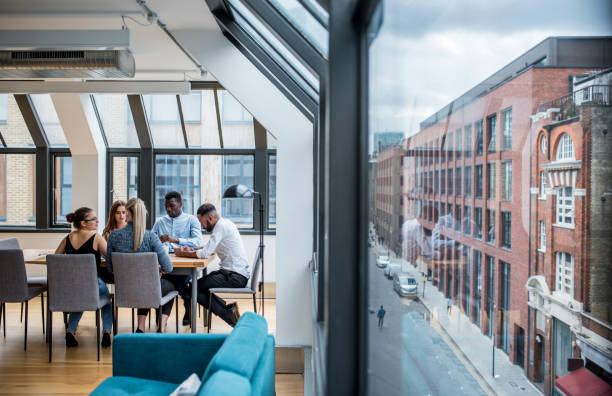
Fire Safety for Commercial Buildings
For commercial buildings and businesses, or any other non-domestic or non-residential premise, there can be a number of people responsible, or “responsible persons”, for the fire safety in the building. These can include employers, building owners, landlords, occupiers, or anyone else with control of the premises such as a facilities manager, building manager, or managing agent.
Despite this large range of options for who can be responsible, it is easy to refer to them as they are simply addressed as a “responsible person” within the context of fire safety. The fire safety regulations for commercial buildings are applicable even in the event of the building having paying guests, for example a bed and breakfast or a hotel.
The responsible person for a commercial building must:
- Carry out regular fire assessments. These must be reviewed regularly, recorded, documented, and enacted upon should any alterations or maintenance be required.
- Inform staff of any safety risks.
- Ensure fire safety measures are in place and operational.
- Train staff on proper fire safety procedures.
- Create a plan to be carried out in case of an emergency.
Any responsible person who carries out a fire assessment has to be able to identify the fire risks to the property, staff who may be at risk, assess the suitability of the prevention measures that are in place alongside escape routes and other safety measures, and create and implement a fire safety action plan.
This can be done by one of the aforementioned responsible persons, but a company such as Sovereign Fire & Security can use specialist knowledge to provide quality support and maintenance across all the aspects of fire safety in your building.
Find out more about fire safety for commercial projects >
What Are the Stages of Fire Safety for Mixed-Use Buildings?
To ensure your building meets mixed-use regulations and is as secure as possible in the event of a fire, it is important to have a procedure that encompasses every stage of fire safety system design, implementation, and maintenance. This will make sure you have up to date, working fire safety systems tailored directly to the varied needs of your property.
- We assess the needs of your property, helping us come up with a design that is bespoke to you.
- We design a comprehensive fire and security system that covers your needs and provides complete safety features.
- Our qualified engineers install the fire safety systems, ensuring maximum effectiveness.
- By surveying your fire safety systems, we ensure they are working and in-line with mandatory government regulations.
- Should your fire safety system fail or encounter issues, our responsive maintenance team is always on hand to help resolve the problem.
By providing comprehensive coverage of every stage of design and implementation for fire and life safety systems, we ensure that you and your property are as protected as possible. Our fire safety offerings – such as our range of fire alarm services – detect, alert, and ultimately save lives.
Find out about the stages of fire alarm testing, servicing, and maintenance with our article >
Fire Safety and Security for Your Mixed-Use Building from Sovereign
Make sure you comply to all the regulations for the various occupancies in your mixed-use building – whether it’s a mix of commercial, residential, retail, or anything else, keeping up to date on fire safety regulations will not only give you legal coverage but will improve the safety of your property and assets while saving the lives of your occupants.
If you’re in need of fire safety or security for your mixed-use building or project, don’t hesitate to get in touch or check out our services to see exactly what we can offer you. Read on with some related articles to inform yourself further on the importance of fire safety.
Protect your warehouse with fire and security systems from Sovereign >
Find out when an automatic fire detection system is most needed >
Recent Articles
Innovations and Regulations for Smoke Detection and Fire Alarms
Making sure your fire safety systems are up to standards saves lives, protects your building, and ensures you’re compliant with government regulations. However, with so many types of alarm systems [...]
Fire and Security – The Complete Guide to Fire Escape Regulations in the UK
Fire risks are real, with 622,173 incidents attended by Fire and Rescue Services in England for the year ending March 2023. Many things can keep you safe from fires. But [...]
Fire Safety for Mixed-Use Buildings
Ensuring you have up to date fire safety systems for your mixed-use building isn’t just a good way to keep your residents and structure safe and secure – it is a legal requirement. [...]

